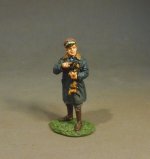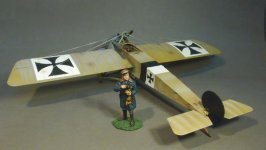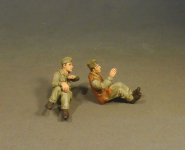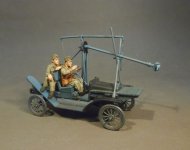KNIGHTS OF THE SKIES
The Fokker D.VII was a German World War I fighter aircraft designed by Reinhold Platz of the Fokker-Flugzeugwerke. Germany produced around 3,300 D.VII aircraft in the second half of 1918.
In service with the Luftstreitkräfte, the D.VII quickly proved itself to be a formidable aircraft.
The Armistice ending the war specifically required Germany to surrender all D.VIIs to the Allies.
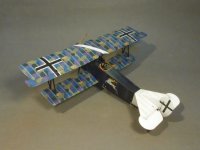
ACE-37
KNIGHTS OF THE SKIES,
FOKKER DVII (Alb),
JASTA 40, JULY-AUGUST 1918,
CARL DEGELOW.
(1pc)
Carl "Charly" Degelow (5 January 1891 – 9 November 1970) Pour le Merite, Royal House Order of Hohenzollern, Iron Cross, was a German fighter pilot during World War I. He was credited with 30 victories, and was the last person to win the military Pour le Merite.
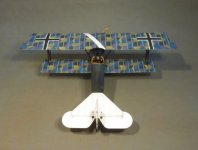
The fuselage of Carl Degelow’s early production Albatros built Fokker DVII features the white stag logo of “Dr. Lahmann’s Sanatorium” in Dresden, where Degelow had spent time recuperating from an arm wound he received in 1915 while serving in the infantry.
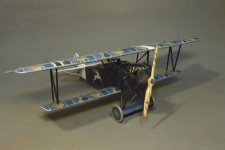
To find out more about Carl Degelow, the book “BLACK FOKKER LEADER” by Peter Kilduff, is highly recommended.
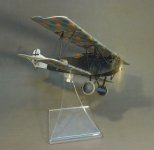
More to follow...........................................................
The Fokker D.VII was a German World War I fighter aircraft designed by Reinhold Platz of the Fokker-Flugzeugwerke. Germany produced around 3,300 D.VII aircraft in the second half of 1918.
In service with the Luftstreitkräfte, the D.VII quickly proved itself to be a formidable aircraft.
The Armistice ending the war specifically required Germany to surrender all D.VIIs to the Allies.

ACE-37
KNIGHTS OF THE SKIES,
FOKKER DVII (Alb),
JASTA 40, JULY-AUGUST 1918,
CARL DEGELOW.
(1pc)
Carl "Charly" Degelow (5 January 1891 – 9 November 1970) Pour le Merite, Royal House Order of Hohenzollern, Iron Cross, was a German fighter pilot during World War I. He was credited with 30 victories, and was the last person to win the military Pour le Merite.

The fuselage of Carl Degelow’s early production Albatros built Fokker DVII features the white stag logo of “Dr. Lahmann’s Sanatorium” in Dresden, where Degelow had spent time recuperating from an arm wound he received in 1915 while serving in the infantry.

To find out more about Carl Degelow, the book “BLACK FOKKER LEADER” by Peter Kilduff, is highly recommended.

More to follow...........................................................


